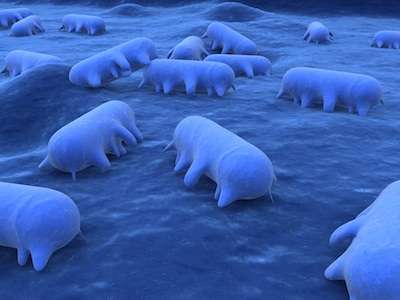Study shows extreme heat and precipitation are increasing salmonella infections

Extreme heat and precipitation events, which are expected to increase in frequency and intensity due to climate change, are associated with increased risk of salmonella infections, according to a study led by researchers from the University of Maryland School of Public Health. The study is the first to provide empirical evidence that salmonella infections related to extreme weather events are disproportionately impacting those living in the coastal areas of Maryland.
"We found that extremely hot days and periods of extreme rainfall are contributing to salmonella infections in Maryland, with the most dramatic impacts being seen in the coastal communities," said Dr. Amir Sapkota, associate professor at the Maryland Institute for Applied Environmental Health (MIAEH). "As we prepare for the future, we need to take this differential burden into account."
Salmonella, a group of food- and waterborne bacteria, is commonly found in raw poultry, eggs, beef, and unwashed produce. Salmonella causes an estimated 1.2 million cases of acute gastroenteritis (aka "stomach flu," with symptoms including diarrhea, fever, vomiting and abdominal cramps) in the United States each year. In Maryland, more than 9,500 cases of Salmonella infections (confirmed by cultures) were reported to the health department between 2002 and 2012. Past studies have suggested a connection between weather (temperature and rainfall) and salmonella infections, also known as salmonellosis.
This new study identified extreme heat and precipitation events during 2002-2012 and linked them with the salmonella infections data from the health department. The extreme events were identified using ~30 years of weather data (from 1960-1989) as the baseline. The research team, which included environmental epidemiologists, microbiologists, earth system scientists and officials from the Maryland Department of Health and Mental Hygiene (DHMH), observed that a one-unit increase in extreme heat and precipitation was associated with 4.1 percent and 5.6 percent increases in the risk of salmonellosis, respectively. The observed risk was considerably higher in coastal areas compared to non-coastal areas of Maryland: 5.1 percent versus 1.5 percent for extreme heat events, and 7.1 percent versus 3.6 percent for extreme precipitation events.
Published in the interdisciplinary journal Environment International, the study highlights the need to engage public health practitioners and policy makers to prepare for and respond to climate change-associated adverse health effects at local, state, and national levels.
More information: "Climate change, extreme events and increased risk of salmonellosis in Maryland, USA: Evidence for coastal vulnerability," Environment International, Volume 83, October 2015, Pages 58-62, ISSN 0160-4120, dx.doi.org/10.1016/j.envint.2015.06.006
Journal information: Environment International
Provided by University of Maryland



















